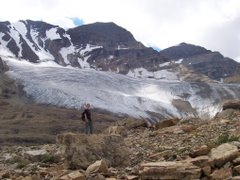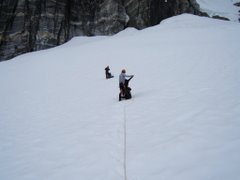 Yesterday, I gave a talk to the home crowd on the dustiest polar glaciers on earth, the great analogues for Martian life (I'm working on my marketing skills for future endeavors). My adviser is back from his tour del tropicos so it was a good time to present. Great feedback!--- Including from Bill Showers, he stuck around for my talk... I'm still drooling over the auto-nitrate analyzer Bill uses in his studies. It will revolutionize future stream studies- best capturing pulse events (and be easy for students to use!!!). I am auctioning off my doll collection to buy one... no seriously, I will write a grant proposal for this one.
Yesterday, I gave a talk to the home crowd on the dustiest polar glaciers on earth, the great analogues for Martian life (I'm working on my marketing skills for future endeavors). My adviser is back from his tour del tropicos so it was a good time to present. Great feedback!--- Including from Bill Showers, he stuck around for my talk... I'm still drooling over the auto-nitrate analyzer Bill uses in his studies. It will revolutionize future stream studies- best capturing pulse events (and be easy for students to use!!!). I am auctioning off my doll collection to buy one... no seriously, I will write a grant proposal for this one.In the final stretch of PhD-land, I am building greater context for the stream chemistry story in the McMurdo Dry Valleys... although the dry valleys have been dry valleys for millions of years they are projected to respond to future global climate change... and I do have some data from the melt year to project metal fluxes with....and I do have some smart friends to collaborate with...
My coffee breath is getting to me, so I'm done tooling for now.








